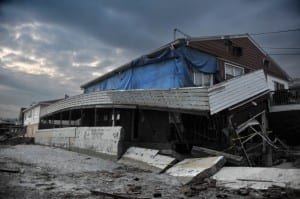By Sameer Sule
SANDY- if you live in the northeast you will not forget her name for a long time. Every CEO, business owner and home owner was holding his/her breath as Sandy blew over us. I know I was. My house is surrounded by trees and every time a 50 mph gust came, I was praying to the higher power that the branches held up. Unfortunately a tree on the adjoining street couldn’t hold up and came down, knocking the power out from our neighborhood for a day. We were the lucky ones! Others in the NY and NJ area weren’t so lucky.
The damage to people, property and businesses in NY and NJ is unimaginable. According to early estimates over 100,000 homes and businesses were completely destroyed or severely damaged. Many business owners have lost everything and may never recover. All their life’s work gone in a blink of an eye. My prayers go out to people who have been disastrously affected by Sandy. Could they have done more to protect their businesses? In some cases the answer is no; we are powerless in front of mother nature and despite our best preparations things can go real bad. But in many cases, I am sure business owners are cursing themselves for not being better prepared. Most businesses do not have disaster recovery plans in place. Simple things like backing up data in a secure place, having redundant power supply such as a portable generator are not in place.Taking these simple steps can mean the difference between business recovery or business death.
Events like Hurricane Sandy remind us how close we get to losing everything. Its just a matter of luck that one business or home gets destroyed and another doesn’t. Yet many of us thank our stars and move on without really considering what we can do to protect our family, home and business in the event of a disaster. We live in an information age and our life is practically a collection of bytes. Apart from a few hard copies most of our information is now stored in electronic format. Now is the time for those of us lucky enough to escape unscathed from Sandy to take a look at what is important in our lives and take steps to safeguard it. Do we have all our important documents in a safe place? How about all our electronic data- our files, family pictures, legal information, financial information? Have they been backed up online and can we recover them easily afterwards?
Knowing that we can recover our critical data after a disaster will make the recovery process relatively easier. So unless your data is a cat with nine lives, Sandy just used up one. How many more lives does your data have?
Sameer Sule is a Business Technology Consultant at Kinara Insights, a company providing contingency/disaster recovery planning services to doctors, dentists and healthcare practices. He helps his clients understand and use technology to reduce practice downtime, increase efficiency and improve quality of patient care.
Check out Sameer’s Google+ profile
















